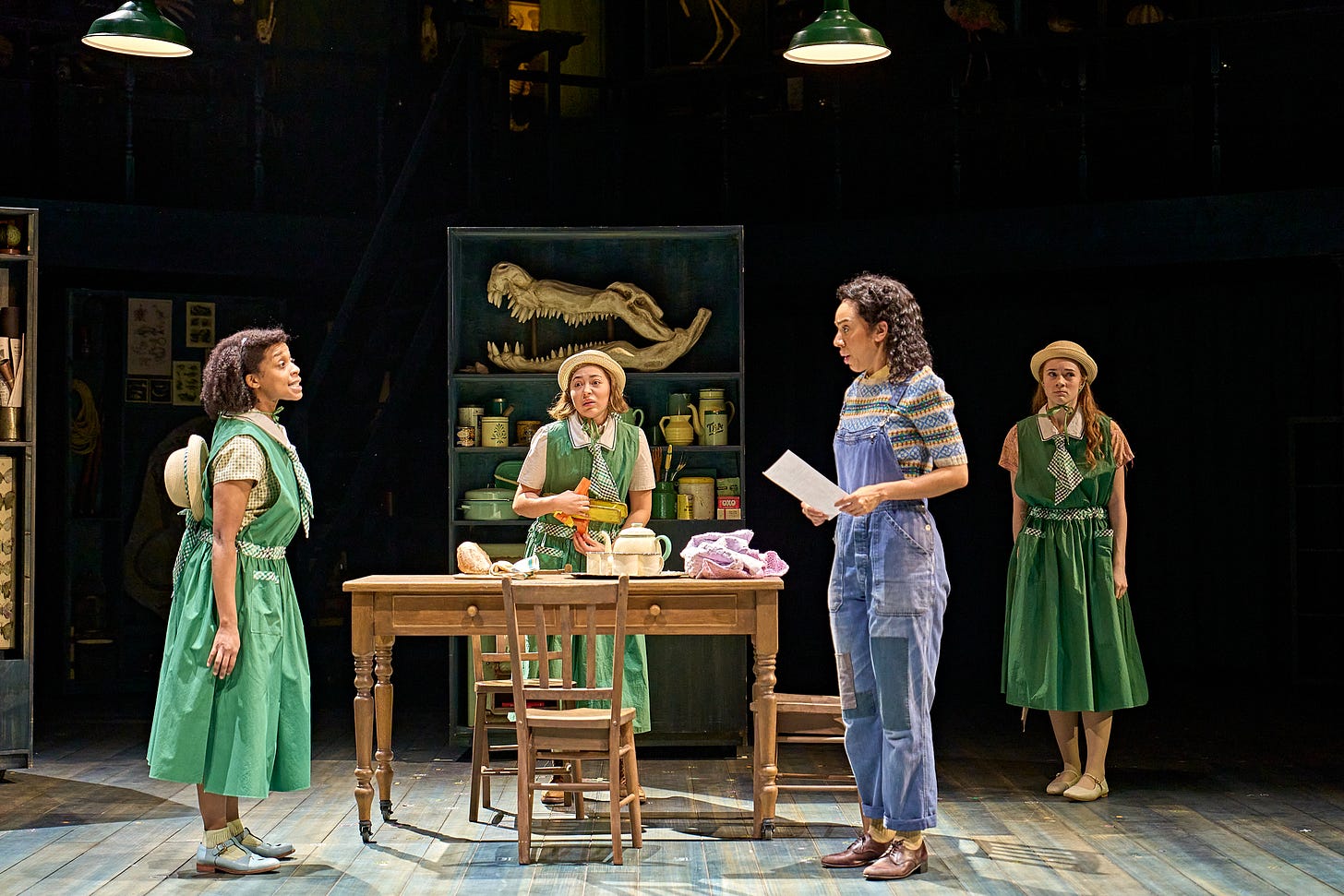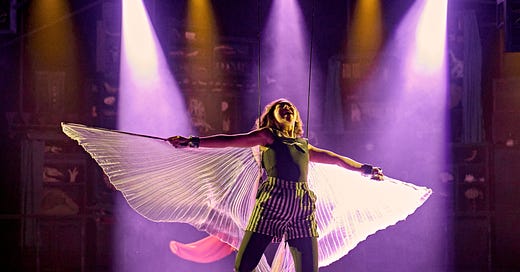‘Feminist and empowering’: Why every generation falls for Ballet Shoes
From a 1936 children’s story to a beloved audio-book, TV film, and finally a play... three critics dig into the enduring appeal of the Fossil sisters
“Fossils are the preserved remains of a plant or animal.” So begins Great Uncle Matthew in a lecture on palaeontology at the start of Ballet Shoes. Fossils occur when matter becomes buried, compacted under layers and layers of earth. Pressed down, but perfectly preserved.
And fossils are buried by time – lying in wait, until they are “dug up, dug out”. Fossils are a time capsule: a snapshot, of life as it once was.
Fossils are also little girls.
In Ballet Shoes – and in the minds of generations of women – the Fossils are three sisters. Pauline, Petrova and Posy choose Fossil as their invented surname, because as orphaned babies each were “collected” by Great Uncle Matthew (aka Gum) and delivered to his niece, Sylvia, to raise. Becoming a Fossil is an act of self-determination: it is a name they vow to put “into history books, because it’s our very own, and nobody can say it’s because of our grandfathers.” Living in poverty after Gum disappears on another fossil-hunting trip, the girls earn try to money by performing on stage, leading Pauline to discover a talent for acting and Posy becoming an exceptional dancer, while Petrova yearns to be a mechanic or fly planes.
First published in 1936, Noel Streatfeild’s classic children’s book might seem like its own well-preserved time capsule: a fossilised depiction of a world of nannies and nurseries, stage licenses and lady doctors, organdy and tarlatan and black chiffon velvet dresses from Harrods.
But the book has never been out of print – and wave after wave of young readers have seen themselves in these Fossils, even as they live further and further away from their time. And the love it inspires is frequently fervent: talk to women (it is usually women) of any age about Ballet Shoes, and there’s a decent chance they’ll become misty-eyed about, say, Pauline’s m’audition frock.
So what’s astonishing, really, is the fact that such a perennially, enduringly popular book has never been adapted for the stage – especially given it’s about children who go on the stage. Kendall Feaver’s version for the National Theatre, directed by Katy Rudd, is its first live incarnation.
Perhaps some trepidation about adapting it is due to just how treasured Streatfeild’s book is, a fiercely-guarded childhood love. Can the adaptation live up to the book? And can it shed light on why generation after generation continue to fall for the story of three sisters from the 1930s? I’m joined by two other critics, Susannah Clapp and Isobel Lewis – each of us Ballet Shoes fans, but from different generations – to dig through our Fossil memories, and dig into this new production. By Holly Williams

Holly Williams: So, what was your relationship to the book?
Susannah Clapp: Oh very strong. I read it in the 50s, and it was an important book to me. In the landscape of children’s literature, it has a lot in common with many other classics – not least the orphan-ness of the children, and a sense of displacement and so on. But I think what made it stand out was its focus on ambition, on talent, and the fact that they are doing it for themselves.
Holly: I was also drawn to that self-determination, that they have things they want to do because they really, really love those things – rather than it being about the Prince, or about magic…
Susannah: Exactly – I think that’s absolutely fundamental. And also, one associates that sort of obsessionalism more with boys than with girls. This was new, in that sense.
Holly: Would you have expected this book to have continued to be read, down the generations?
Susannah: It’s so interesting! No, I thought not. It was historical even when I read it. I mean, I’ve always loved it – but I thought it might be love which slightly had dated. Pigtails and nannies and the Cromwell Road… I thought that was such a dead era, or a removed era, that it might not speak to people.
Looking back on it, I realise I was wrong. I was mistaken about the writing – it’s actually much more free-flowing than I had remembered – and also, it’s been further liberated by this production. Without dismantling the book, it has recalibrated it, so that I certainly became more aware of feminist and empowering attitudes than I had been as a child.
Isobel Lewis: I was talking to my mum about Ballet Shoes the other day – I was back home, and I actually found my childhood copy of it – and we couldn’t remember if she read it to me or I read it on my own. But I was probably around eight or so, because I read it before the BBC adaptation. That came out in 2007 and I would have been 10. It was Emma Watson – around the time of Harry Potter V – and this actress [Yasmin Paige] who was in a Doctor Who film called The Sarah Jane Adventures… and I absolutely loved.
Everyone watched that on TV; that was the one, for my generation. It’s much more traditional [than the play], even the costumes and styling, it’s quite a soft adaptation. I remember watching with my mum and my grandma that Christmas – and it was so nice to have that experience, that I’d read the book, and my mum had read the book, and now we all get to bond over watching it together on the screen.
Holly: The TV show has no real association for me, but I do remember listening to Ballet Shoes on cassette – which ages me – but it turns out lots of people my age did too. We can all hear the words in the same voice! I’ve just googled it, and it was narrated by Jan Francis, best known for the sit-com Just Good Friends, but Wikipedia tells me she started her career in the Royal Ballet – no wonder she was so brilliant at bringing this story to life…
Susannah: One of the pulls of Ballet Shoes is that it’s a fundamental triptych. As in Chekhov, of course, but also Cinderella and the Ugly Sisters, or the Three Weird Sisters… the March sisters are four, but one conveniently removes herself!
But I think that enables most people to think about which sister they could identify with. I was wondering if you were going to ask which one I identified with…
Holly: It is on the list of questions!
Keep reading with a 7-day free trial
Subscribe to Exeunt to keep reading this post and get 7 days of free access to the full post archives.








